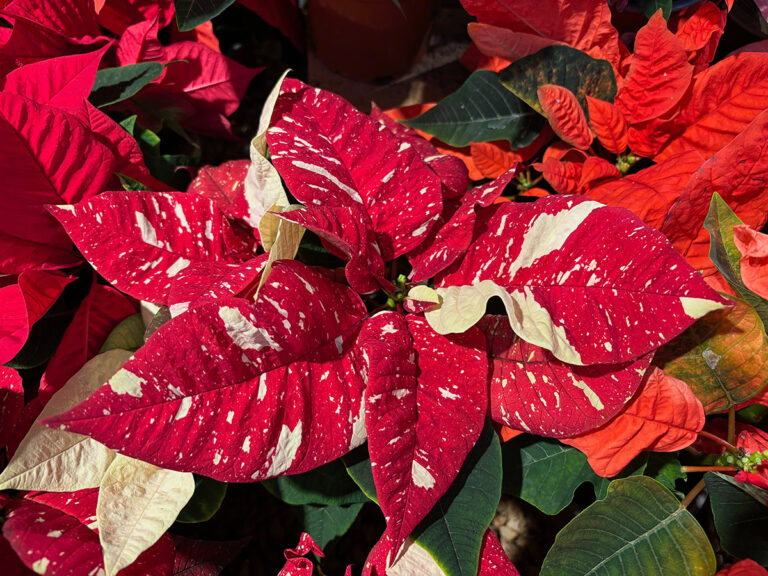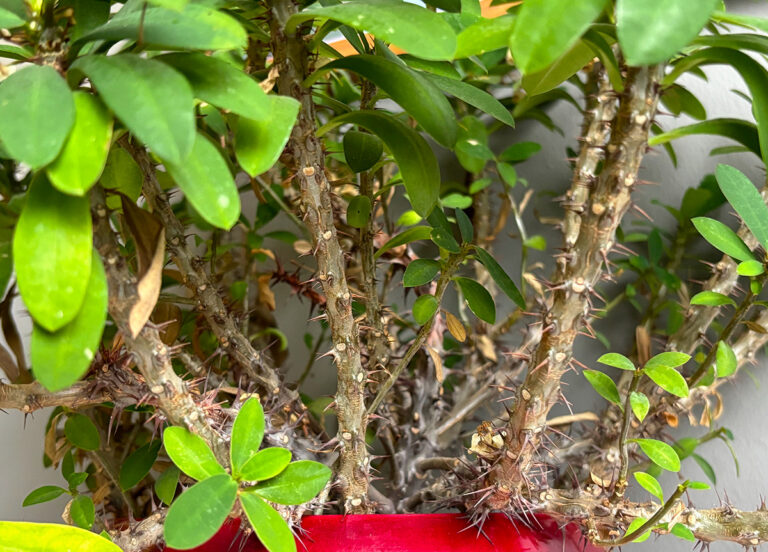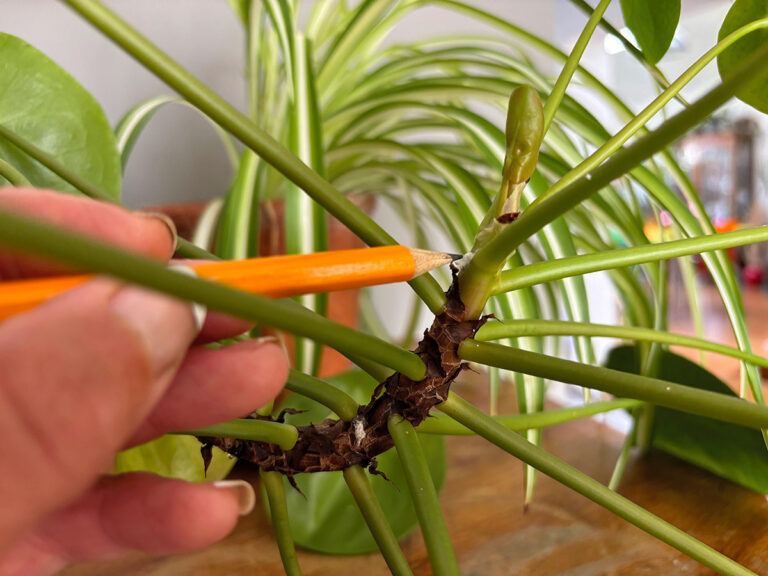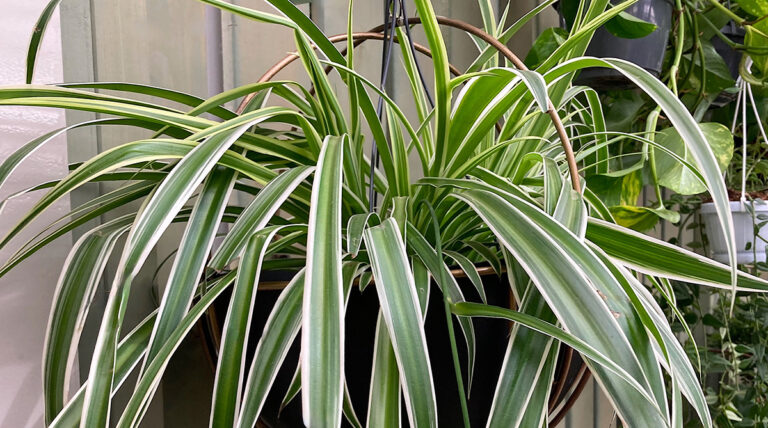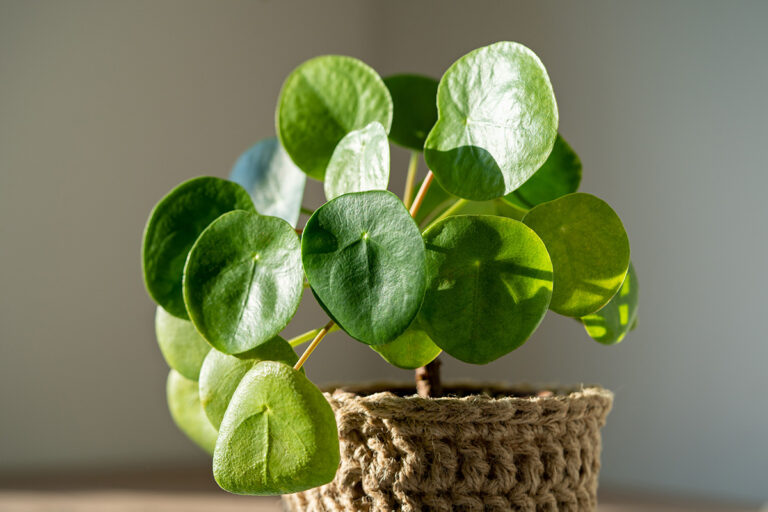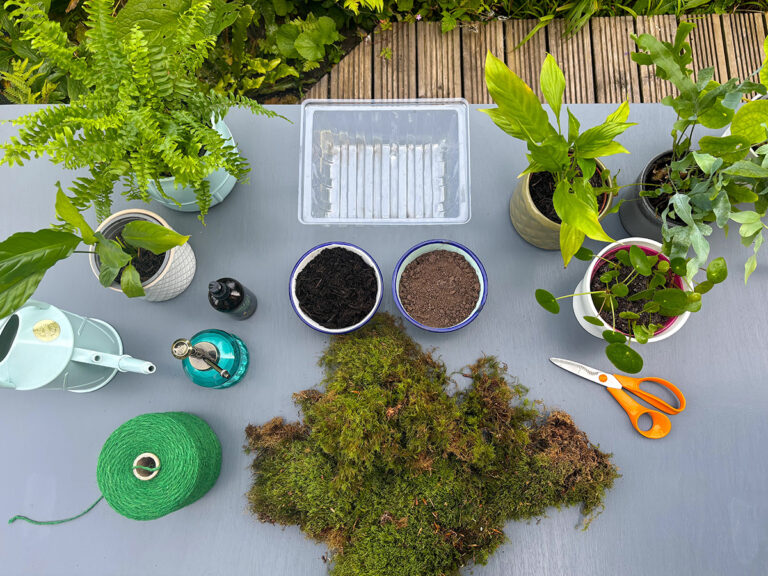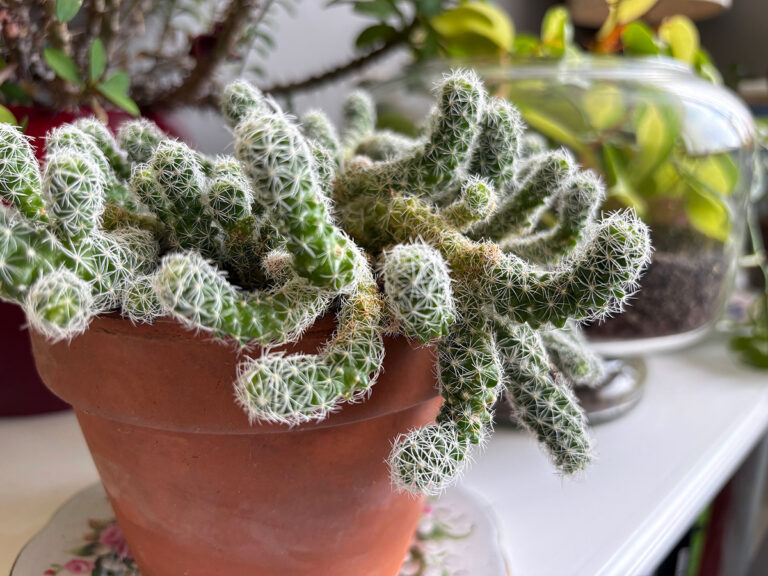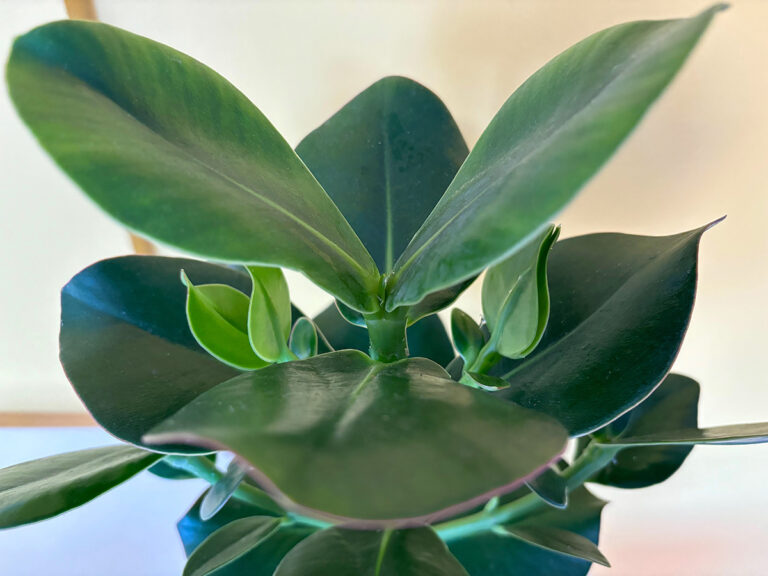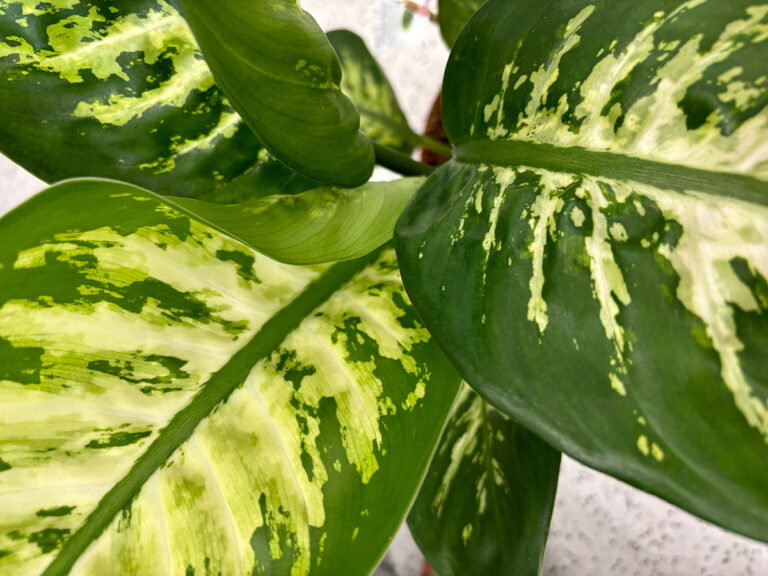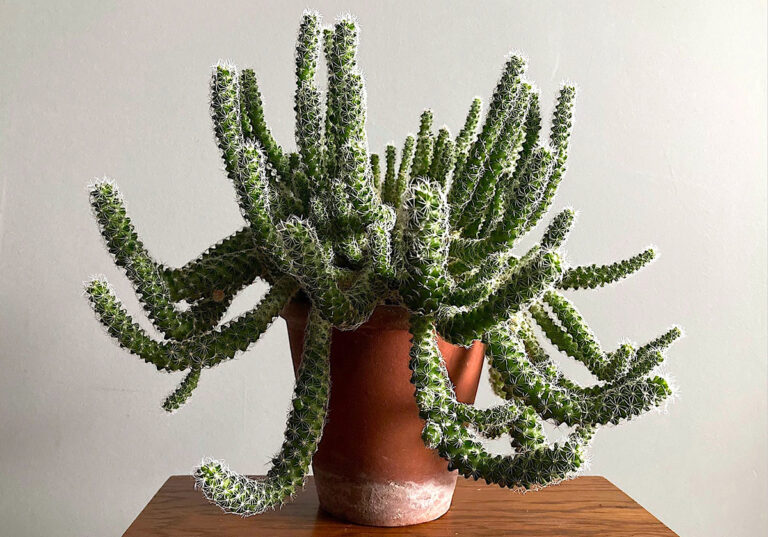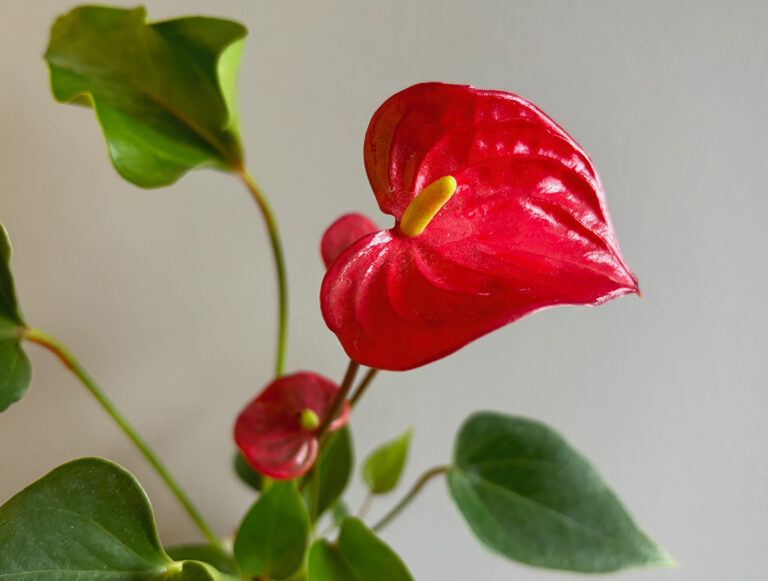What is kokedama? This ancient Japanese art form has been practiced for centuries and comprises of sealing plant roots within soil and wrapping with moss and twine to suspend as a living work of art. ‘Koke’ translates as moss and ‘dama’ ball. Moss balls can even be grouped together to create what are known as string gardens. In recent years this method has become popular with houseplant enthusiasts as a stylish contemporary way to take houseplant collections vertical; ideal if you are short of space.
This traditional Japanese art form has become a mediative mindful activity for modern times, helping focus the mind, even promoting a spiritual connection with nature.
So how do you make a kokedama?
You will need:
- Sheet / carpet moss, Hypnum curvifolium (forage from your garden or buy sustainable moss from reputable sellers)
- Compost (homemade or shop bought)
- Bonsai compost / keto soil / clay dust-free cat litter or clay-based soil
- Water
- A mixing bowl
- Scissors
- Twine
- Mister
- A suitable houseplant
Method one
Mix equal parts of compost with a bonsai / keto compost or clay-based soil; the mix needs to be free to drain but hold together once compressed into a ball. Both bonsai and keto soil are popular as their clay compounds help bind the mixture together.

Shape compost
Add water to bind the soil until it is the consistency of a sticky cake mix; if you’ve added too much water just pour some of the excess out. Now get your hands dirty and cup the soil together to form a large ball. Squeeze out as much water as possible. Once you have a formed a firm ball then gently twist and divide the soil ball in to two equal halves.

Prep houseplant
Take your houseplant out of its pot and tease off some of the old potting compost to release the roots.
Mould soil around root ball
Place the roots between the two halves of the compost and firm together. Gently mould and squeeze into place to form an outer ball of soil encasing the roots.
Wrap with moss
Lay sheets of carpet moss on a table and place the soil ball in the centre. Wrap the moss up the sides of the ball so they meet at the top. Add more moss if needed until the entire rootball is covered.

Secure with twine
Take garden twine and wrap this around the moss ball in different directions to secure the moss around the rootball. Once tied add two long lengths and tie a knot at the top; this forms your hanger to suspend the kokedama.
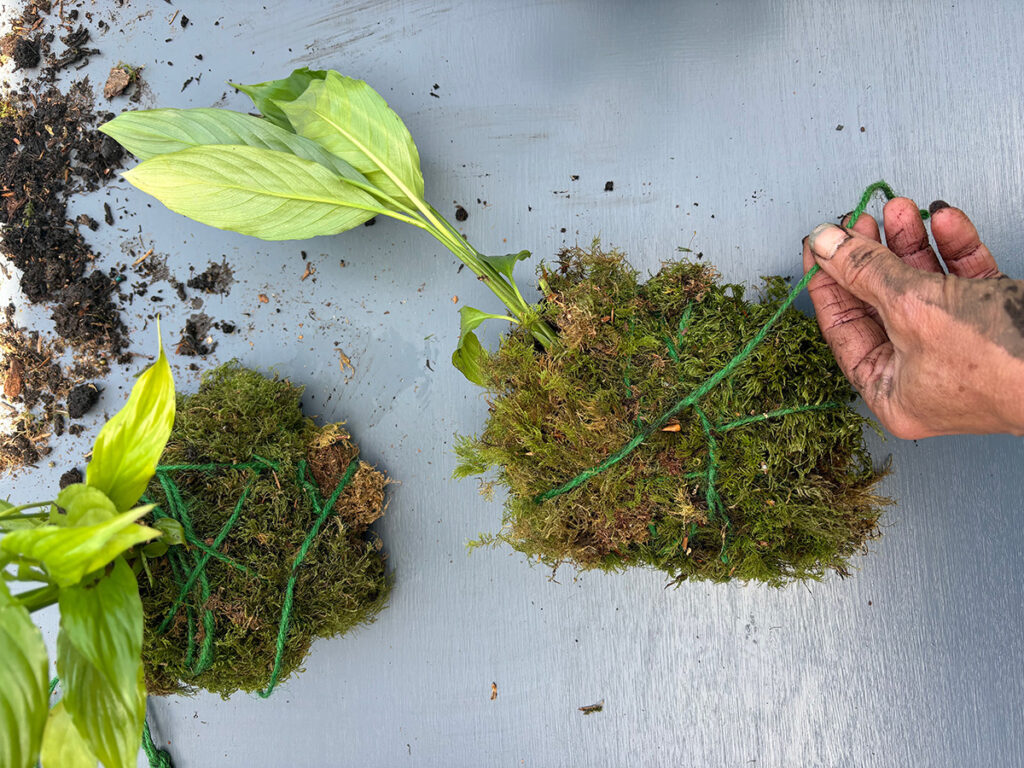
Method two
Take a bowl and lay a couple of long lines of twine in a criss cross along the bottom then line the base of the bowl with carpet moss face down. Then simply half fill the bowl with compost mix or repeat the method above for forming a moist soil ball. Twist into half and place one half of the soil ball on top of the moss in the bowl then place your plant’s root ball in the centre of the mix and top with the other half of the soil ball.
Pick up the four ends of string and lift the ball out of the bowl. Place on a table and gently squeeze the ball to firm the soil and moss together then wrap twine around the moss to encase its contents. You may need to mould moss to fit around the neck of the ball where it meets the plant stems. Add more twine to secure firmly and knot longer lengths of twine together to form a hanger.

You now have a bespoke kokedama to hang in your home and show off your beautiful houseplant.
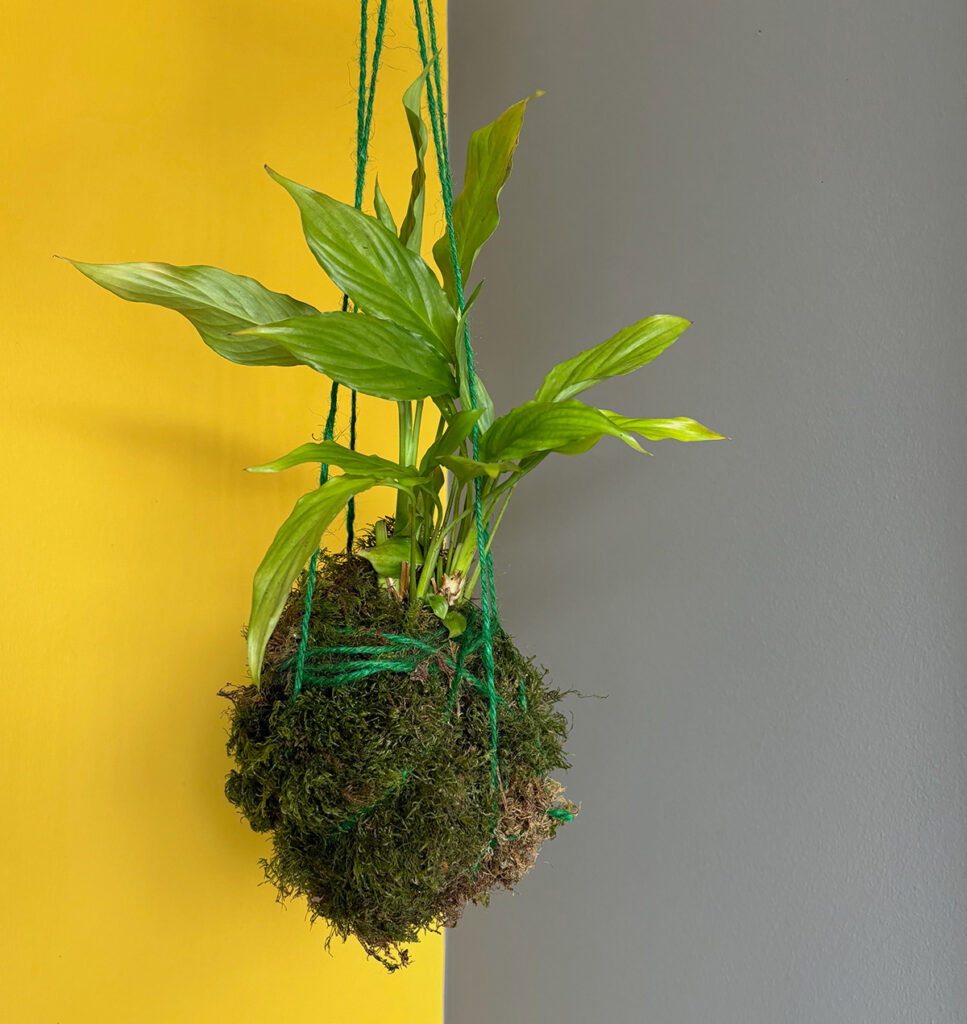
Orchids and kokedama
Orchids are epiphyte’s which means their aerial roots obtain nutrients and moisture from the surrounding air so need a different kokedama set up to the traditional method which will be fully described in a separate feature.
Displaying
The traditional way to display kokedama is by suspending them from the ceiling, hook or off a curtain rail or pole but if that does not work in your space then sit the base of your moss ball in a shallow dish and enjoy as a table display. Place the kokedama in bright indirect sunlight; direct light will dry the moss out quickly and your houseplant leaves may scorch.
Watering
Moss balls need to be kept hydrated. If the ball feels light then it is in need of a water. As with all houseplants, watering frequencies vary and depend on the individual environment of where the plant is situated, with light and temperature effecting the speed water is used so take a judgement call on the needs of your plants but aim to water once a week in summer.
Depending on the individual plant’s needs add a couple of pipettes of houseplant food; Plantsmith’s Fortifying Houseplant Feed is ideal.
The easiest way to water a moss ball is to fill a bucket with rainwater and submerge the ball to soak it. Lift and let it drain. Once it has stopped dripping you can return it to its indoor home.
Regularly mist the plant and ball to keep moist and humid between waterings and for an extra nutritional boost use Plantsmith’s Perfecting Houseplant Care Mist which contains a balance of essential nutrients to help houseplants thrive, aiding growth, glossy leaves and plant strength.
Rest assured all Plantsmith products are 100% vegan with no animal ingredients or by-products and are Leaping Bunny certified cruelty free; they come in sustainable eco friendly glass bottles which are reusable and recyclable. Plantsmith’s new eco refill bottles are made from a plant-based polymer.
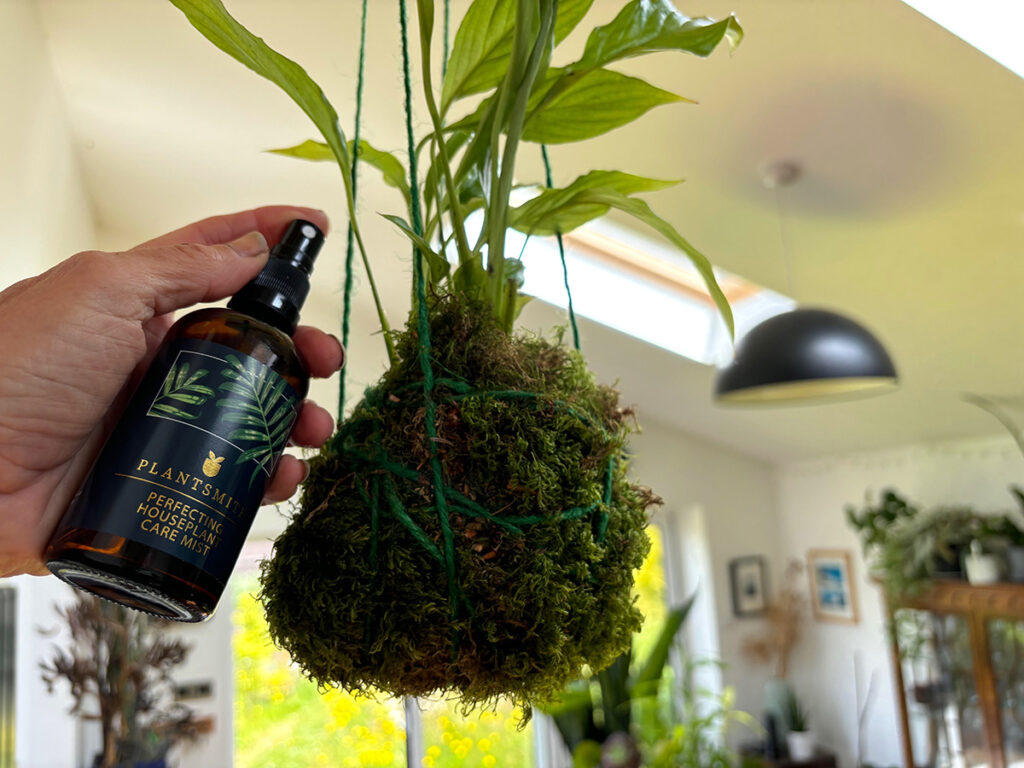
Maintenance
Depending on the speed of growth of your chosen plant, kokedama should last two to three years before the plant out grows its moss ball. At this point gently dismantle the ball and start the process from scratch creating a larger ball to house the roots or transplant to a large pot and look to smaller specimens to create your next kokedama.
Plants for kokedama
Some houseplants are better suited to kokedama than others. The following houseplants have a compact or trailing nature, perfect for kokedama.
Chinese money plant, Pilea peperomioides
Boston fern, Nephrolepsis exaltata
Nerve plant, Fittonia albivenis
Spider plant, Chlorophytum comosum
Heart Leaf Philodendron, Philodendron Scandens
Peace lily, Spathiphyllum wallisii
Painted-leaf Begonia, Begonia rex-cultorum
Devil’s ivy, Pothos, Epipremnum aureum
Ivy Leaf Peperomia, Peperomia griseoargentea
English ivy, Hedera helix
Bromeliads
Not only do kokedama look amazing, they make incredible gifts, so if you fancy getting creative but already have an impressive kokedama collection on display then why not make one for a friend!


